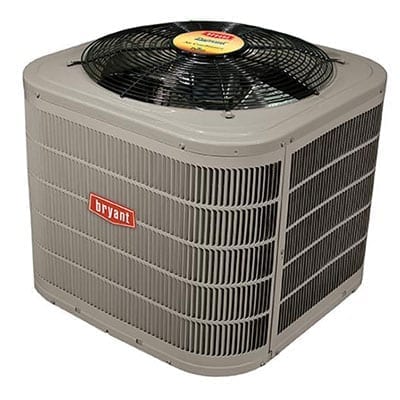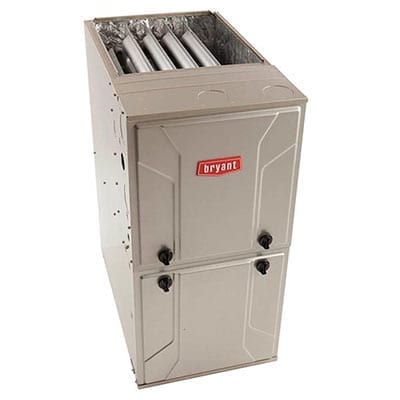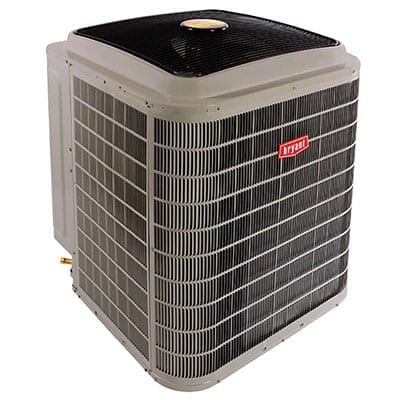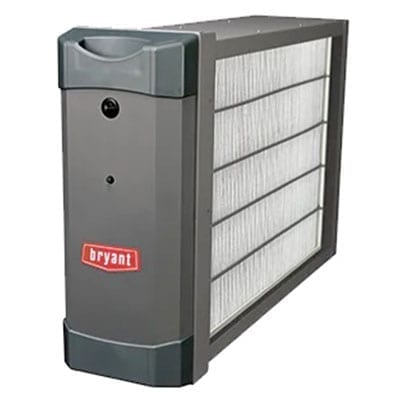Commercial HVAC for Convenience Stores
The reliable functioning of commercial HVAC systems, including central air conditioning, air conditioners, and heat pumps, is crucial for convenience stores, as it significantly impacts the customer experience. In commercial settings like grocery and convenience stores, maintaining optimal temperatures through efficient evaporator units, refrigerated cases, chillers, air conditioners, and economizers is vital to preserve perishable goods and ensure customer comfort. Investing in a robust commercial HVAC system with heat pumps, economizers, and Daikin chillers not only enhances indoor air quality but also contributes to energy efficiency and cost savings for store owners. This blog post delves into the importance of dependable HVAC systems, including air conditioners and central air conditioning, in convenience store operations. These systems have a direct influence on customer satisfaction and bring overall benefits to these commercial buildings, such as maintaining comfortable indoor units.
Understanding the Basics of Commercial HVAC Systems
Components of a Commercial HVAC System
A commercial HVAC system consists of several key components, including an outdoor unit, which plays a crucial role in conditioning the indoor air quality and temperature by managing humidity. The primary components of air conditioning systems include the heat pump, ventilation system, compressor, and evaporator coil. These components are essential for the functioning of HVAC equipment and air conditioners, particularly central air conditioning. The HVAC design incorporates the heat pump, which efficiently transfers heat between different locations. Additionally, the rooftop HVAC units and indoor units work together with the ventilation system to ensure proper airflow throughout the building. Commercial HVAC maintenance is crucial for keeping these systems in optimal condition. The function of air conditioning systems’ compressor is to pressurize refrigerant gas, which then moves through the system to transfer heat. This process is essential for central air conditioning and commercial air conditioners. Finally, in HVAC design, the evaporator coil absorbs heat from indoor air as it passes over it in a split system. This is an important step in commercial HVAC maintenance and conditioning.
The functionality and purpose of air conditioning systems are essential for creating a comfortable environment within supermarkets and commercial buildings. These components, such as air conditioners, play a crucial role in maintaining a pleasant atmosphere within convenience stores. For instance, without an efficient HVAC design and conditioning unit, stale air can accumulate inside commercial buildings, leading to discomfort for both customers and employees. Similarly, if the air conditioning systems’ compressor fails or malfunctions, it can result in inadequate cooling or heating performance for air conditioners, commercial air conditioning units, and air curtains.
Importance of Proper Sizing and Installation
Proper sizing and installation are critical factors that directly impact the performance and efficiency of commercial air conditioning systems and air conditioners in a building. Additionally, the use of air curtains can also contribute to the overall effectiveness of the HVAC unit. When air conditioning systems, including air conditioners and commercial air conditioning units, are not correctly sized for a space, it may lead to energy wastage or insufficient heating/cooling capacity—both scenarios resulting in increased operational costs.
For example:
-
If a convenience store’s commercial air conditioning system is too large for its building’s space requirements, it will frequently cycle on and off (short cycling), consuming excessive energy.
-
Conversely,
-
if undersized,
-
During peak seasons, a commercial air conditioning system in a building will struggle to maintain consistent temperatures.
-
potentially causing discomfort for customers.
Moreover,
-
Inadequate building and conditioning installation can lead to issues such as poor airflow distribution.
-
inefficient operation,
-
higher maintenance needs.
Types of HVAC Systems for Convenience Stores
Rooftop Units
Rooftop units are a popular choice for convenience stores due to their space-saving design and ability to provide efficient commercial air conditioning for the building. These commercial air conditioning systems are installed on the building’s roof, freeing up valuable floor space inside the store. Commercial air conditioning systems in a building are also easy to maintain and service because technicians can access them from outside.
Convenience stores benefit from commercial air conditioning rooftop units as they provide efficient heating and cooling while keeping the building interior space uncluttered. However, one drawback of building commercial air conditioning units is that these systems may be more exposed to outdoor elements, potentially leading to faster wear and tear.
Split Systems
Split systems, commonly used for commercial air conditioning in buildings, consist of both indoor and outdoor components, offering flexibility in terms of installation locations. The indoor unit for the air conditioning can be placed in a utility room or above a drop ceiling, while the outdoor unit for the air conditioning is typically located adjacent to the building.
For convenience stores with limited available rooftop space or where zoning regulations restrict rooftop installations, split air conditioning systems offer an excellent alternative. However, since air conditioning split systems have components installed both inside and outside the store, they may require more frequent maintenance checks.
Factors to Consider When Choosing HVAC Systems for Convenience Stores
When selecting an HVAC system for a convenience store, several factors related to air conditioning should be taken into account.
-
Energy Efficiency: When selecting an air conditioning system, it’s crucial to choose an energy-efficient option that helps minimize operational costs.
-
Space Constraints: When choosing an air conditioning system for convenience stores with limited space, it’s crucial to select a system that doesn’t occupy too much room.
-
Maintenance Requirements: Assessing how easy it is to maintain and service different types of air conditioning (HVAC) systems is essential for long-term cost-effectiveness.
-
Costs: Evaluating initial installation costs as well as long-term operational expenses for air conditioning is vital when choosing an HVAC system.
Air Curtains and Their Role in Retail Environments
Definition and Purpose
Air curtains are devices installed above entryways to create an invisible barrier of air, separating the indoor environment from the outdoor. In retail spaces like convenience stores, air curtains serve multiple purposes. They help in maintaining a comfortable indoor temperature by preventing the loss of conditioned air and keeping out external elements such as dust, insects, and pollutants. This ensures a pleasant shopping experience for customers, with efficient air conditioning that contributes to energy efficiency.
In addition to this primary function, air curtains also aid in preserving the overall air quality within the store by acting as a barrier against outside air contaminants. By creating a steady flow of air across entryways, they prevent unwanted odors or pollutants from entering the store. Maintaining hygiene and freshness in food retail environments is particularly crucial, especially when it comes to air conditioning.
Benefits of Using Air Curtains
The use of air curtains in convenience stores offers several benefits that directly impact both operational efficiency and customer satisfaction. One significant advantage of air conditioning is their ability to reduce energy loss. By effectively sealing off the entrance when doors are opened or closed, air curtains help prevent cold or warm air from escaping while minimizing the need for constant heating or cooling adjustments within the store.
Moreover, these air conditioning devices contribute to cost savings by lowering utility bills associated with heating and cooling systems. As they minimize temperature fluctuations at entrances/exits, they assist traditional HVAC systems (like air conditioners) in maintaining consistent indoor temperatures without overworking them constantly.
Another notable benefit of air conditioning is enhanced customer comfort due to improved conditions near entryways. For instance, during hot summer days or chilly winters, customers can enter or exit without experiencing uncomfortable drafts near doorways since air curtains, if well-designed and maintained properly generate a gentle stream of either cool or warm airflow across entry points.
How Air Curtains Help Maintain Indoor Temperature
By creating an effective air seal between indoor and outdoor environments when doors open/close frequently throughout business hours, you can control heat/cold transfer. This helps maintain stable interior temperatures despite external weather conditions. Reducing reliance on traditional HVAC systems like cool air conditioning units through efficient preservation of interior climate – leading to decreased energy consumption & lower utility expenses. Preventing influxes of unconditioned air from the outside helps maintain optimal product storage conditions and reduce potential moisture-related damages. Lowering risks related to humidity levels inside stores ensures clean and fresh indoor air quality.
Differentiating Commercial from Residential HVAC Systems
Key Differences
Commercial HVAC systems, which are designed for larger spaces and higher occupancy, differ from residential HVAC systems in several ways. One key difference is the air handling capacity of commercial HVAC systems, which is much greater than that of residential systems. One of the key differences is their size and air capacity. Commercial HVAC systems are designed to heat or cool large spaces, such as convenience stores, whereas residential systems are meant for smaller areas like homes. These systems ensure optimal air quality and comfort in their respective settings. Commercial air systems often use more complex components and have higher ventilation requirements compared to residential air units.
Another difference lies in the complexity of the air installation process. While residential buildings typically use split systems that can be installed relatively easily, commercial establishments require more intricate air setups due to their larger size and specific air needs.
In terms of maintenance and repair, commercial HVAC system also requires specialized expertise due to its scale and complexity. Unlike residential units, commercial equipment often involves custom-made components that demand a higher level of technical knowledge for servicing. This is especially true for air conditioning systems, where specialized parts are required.
Specialized Design and Installation
The design and installation of a commercial HVAC system, especially in convenience stores, require specialized attention due to various factors unique to these environments. One of the key factors is ensuring proper circulation of air. For instance, unlike residential buildings where individual temperature control may suffice for different rooms or areas within a home, convenience stores need uniform climate control throughout the entire air-conditioned space.
Moreover, because convenience stores usually have high customer traffic throughout the day with frequent opening and closing of doors – similar to what was discussed about air curtains – this constant influx affects the efficiency of the heating or cooling system. Henceforth it’s essential for designers to factor in these aspects when planning a commercial HVAC system, ensuring it can maintain consistent air temperatures despite these air challenges.
When installing a new unit or replacing an existing one in a convenience store setting specifically catering towards food items requiring refrigeration (e.g., cold beverages), designers must consider incorporating refrigeration elements into the overall setup while maintaining proper airflow distribution within the store environment.
Common Issues and Maintenance of Commercial HVAC Systems
Common Problems
Commercial HVAC systems in convenience stores often face operating costs due to common issues such as clogged air filters, refrigerant leaks, or thermostat malfunctions. These air problems can lead to inefficient air cooling or heating, resulting in discomfort for air customers and air employees. Dirty air condenser coils can cause the air system to work harder, increasing air energy consumption and air expenses.
Convenience store HVAC units are susceptible to wear and tear due to continuous operation. The heavy demand on these systems makes them prone to issues like compressor failures or electrical component malfunctions. These problems not only disrupt the store’s operations but also impact the overall shopping experience for customers.
Importance of Regular Maintenance
Regular commercial HVAC maintenance is crucial for preventing these common issues and reducing operating costs in convenience stores. By scheduling routine inspections and servicing, store owners can ensure that air filters are clean, refrigerant levels are adequate, and all components are functioning optimally.
Proactive maintenance helps identify potential problems early on before they escalate into major disruptions. For instance, addressing minor refrigerant leaks promptly can prevent them from developing into larger issues that require costly repairs or replacements. Moreover, well-maintained HVAC systems operate efficiently, leading to lower energy consumption and decreased operating costs over time.
Maintaining optimal indoor temperatures is essential for preserving perishable goods stocked in convenience stores. With regular maintenance checks focusing on temperature control settings and system performance, owners can safeguard their inventory from spoilage while providing a comfortable shopping environment for patrons.
Tips for Troubleshooting
When troubleshooting common commercial HVAC problems in convenience stores without professional assistance immediately available:
-
Check air filters regularly: Clogged filters restrict airflow causing strain on the system.
-
Monitor thermostat settings: Ensure accurate temperature readings by calibrating thermostats periodically.
-
Inspect condenser coils: Keep them clean from dirt buildup which hinders heat transfer efficiency.
-
Assess refrigerant levels: Low levels indicate leaks that need prompt attention to avoid further damage.
Implementing these troubleshooting tips allows store managers to address minor issues promptly while waiting for professional technicians if needed.
Factors to Consider for HVAC Systems in Convenience Stores
Key Considerations
When choosing an HVAC system for a convenience store, several key factors must be considered. The size of the store plays a crucial role in determining the capacity and type of HVAC system required. Larger stores may need more powerful systems to maintain optimal temperature levels throughout the space, while smaller stores can function efficiently with less powerful units. The location of the convenience store is significant. Stores located in regions with extreme temperatures or high humidity levels will require robust HVAC systems capable of handling these conditions effectively.
It’s essential to consider not only the current needs but also any future expansion plans when selecting an HVAC system for a convenience store. A scalable system that can accommodate potential growth without requiring a complete overhaul is advantageous. Moreover, noise level is another important consideration, especially in urban areas where noise ordinances may be strict.
Energy Efficiency and Regulations
Energy efficiency requirements and regulations are critical aspects to take into account when choosing an HVAC system for a convenience store. Selecting energy-efficient systems not only helps reduce operational costs but also aligns with environmental sustainability goals. Compliance with local and national energy efficiency standards ensures that the chosen HVAC system meets all necessary regulations.
By opting for energy-efficient models equipped with programmable thermostats and other advanced features, convenience store owners can minimize their carbon footprint while maximizing cost savings on utility bills.
Impact of Climate Conditions
The impact of climate conditions cannot be overstated. In regions prone to extreme heat or cold, it’s imperative to choose systems specifically designed to handle such climates efficiently.
For instance, stores located in hot climates might benefit from air conditioning units equipped with variable refrigerant flow (VRF) technology that offers precise temperature control while conserving energy. On the other hand, stores situated in colder regions would require efficient heating solutions capable of maintaining comfortable indoor temperatures during winter months without consuming excessive amounts of energy.
Efficiency and Design of HVAC for Food Service Areas
Importance of Proper Ventilation
Proper ventilation is crucial in food service areas within convenience stores to maintain food safety and quality. Adequate ventilation helps remove cooking odors, smoke, and grease particles from the air, ensuring a clean and healthy environment. Efficient exhaust hoods are essential for removing heat, steam, and airborne contaminants generated during cooking processes.
Efficient exhaust hoods equipped with filters help trap grease particles, preventing them from accumulating in the kitchen or clogging ductwork. This not only maintains a cleaner environment but also reduces fire hazards associated with grease buildup. The proper design of exhaust systems ensures that noxious fumes are effectively removed from the kitchen area.
Filtration and Temperature Control
In food preparation areas within convenience stores, effective filtration plays a critical role in maintaining air quality by capturing airborne particles such as dust, allergens, and microbial contaminants. High-quality filtration systems prevent these pollutants from circulating through the HVAC system while also preserving the cleanliness of refrigerated cases where perishable items are stored.
Moreover, precise temperature control is vital for preserving food quality and ensuring compliance with health regulations. Commercial kitchens require refrigeration units designed to maintain consistent temperatures to keep perishable items fresh while preventing bacterial growth. By optimizing temperature control through efficient HVAC design strategies tailored to commercial kitchens’ specific needs can enhance both food safety standards and operational efficiency.
Design Strategies for Energy Efficiency
Prioritizing energy efficiency is paramount due to continuous operation demands in such settings. Implementing energy-efficient equipment like freezers or refrigerators can significantly reduce overall energy consumption while maintaining optimal storage conditions for various foods.
Furthermore, strategic placement of cooling equipment such as walk-in freezers or refrigerated display cases contributes to minimizing energy usage by reducing heat transfer between hot kitchen environments and cold storage areas. Utilizing advanced technologies like smart thermostats enables precise temperature regulation based on real-time demand fluctuations without compromising on food safety requirements.
Advanced HVAC Technologies for Retail Spaces
Benefits of Smart Thermostats
Smart thermostats offer precise control over temperature settings, allowing convenience stores to optimize energy usage. They can be programmed to adjust temperatures based on occupancy and outside weather conditions. For example, during peak hours, the thermostat can lower the temperature for customer comfort and raise it during off-peak times to save energy.
Smart thermostats also provide remote access, enabling store managers to monitor and adjust settings from anywhere. This feature is particularly beneficial in retail spaces as it allows for real-time adjustments based on foot traffic or special promotions. By optimizing heating and cooling operations, smart thermostats contribute to reduced energy consumption and cost savings.
Zoning Systems for Enhanced Comfort
Zoning systems enable independent control of temperature in different areas of a convenience store. This technology divides the space into zones with separate thermostats regulating each zone’s climate independently. For instance, a zoning system can maintain cooler temperatures in refrigerated sections while keeping other areas at a comfortable level.
By tailoring heating and cooling output according to specific zones’ needs, zoning systems enhance overall comfort within the retail environment. They help minimize wasted energy by avoiding unnecessary conditioning of unoccupied or less frequented areas.
Energy Management Software for Efficiency
Energy management software provides comprehensive oversight of commercial HVAC systems, offering data-driven insights into performance metrics like energy usage patterns and equipment efficiency. With this technology, convenience stores can track their HVAC system’s operation in real time and identify opportunities for optimization.
For instance, if an area consistently requires more cooling than others due to high foot traffic or heat-generating equipment, the software can detect this pattern and suggest adjustments. By leveraging such insights provided by energy management software, retailers can fine-tune their HVAC operations for maximum efficiency while ensuring optimal indoor comfort levels.
Longevity and Performance of Commercial HVAC Systems
Factors Impacting Lifespan and Performance
Commercial HVAC units in convenience stores play a critical role in maintaining a comfortable environment for customers and employees. However, several factors can impact the lifespan and performance of these systems. Energy costs are influenced by the efficiency of the HVAC system, which is affected by factors such as proper sizing, installation quality, and regular maintenance. Issues like short cycling (frequent on/off cycles) can lead to premature wear and tear on components like the chiller or compressor.
Regular maintenance is crucial for ensuring that commercial HVAC systems operate at their optimal level. Without proper care, these systems may experience reduced efficiency, increased energy consumption, and ultimately a shorter shelf life. By addressing small issues promptly through regular inspections and tune-ups, store owners can prevent major breakdowns that could result in costly repairs or even complete system replacement.
Investing in high-quality equipment is essential for improving both longevity and efficiency. While it may require a higher initial investment, top-tier commercial HVAC units are designed to withstand heavy usage while delivering superior performance over an extended period. This not only contributes to cost savings through reduced energy consumption but also minimizes downtime due to malfunctions or failures.
Importance of Maintenance and Timely Repairs
Timely maintenance helps prevent common problems associated with commercial HVAC systems, such as clogged filters or refrigerant leaks which can strain the system’s components leading to decreased operational efficiency over time. Regular cleaning ensures that air filters remain clear from debris allowing unrestricted airflow which reduces strain on the system’s blower motor resulting in lower energy costs.
Addressing minor issues promptly through timely repairs prevents them from escalating into major problems that could compromise the entire system’s functionality. For instance, if there are signs of short cycling within an HVAC unit serving a convenience store’s walk-in cooler section; prompt attention will help avoid potential damage to its chiller causing it to work harder than necessary leading to increased wear-and-tear thus reducing its overall lifespan.
Conclusion
Understanding the unique HVAC needs of convenience stores is crucial for ensuring optimal performance and energy efficiency. From selecting the right system to addressing maintenance requirements, every aspect plays a pivotal role in creating a comfortable shopping environment while managing operational costs. With advanced technologies and strategic design, convenience store owners can enhance air quality, regulate temperatures, and minimize energy consumption.
As the retail landscape continues to evolve, staying abreast of the latest HVAC trends and best practices is essential for maintaining a competitive edge. By prioritizing efficient HVAC solutions tailored to the specific demands of convenience stores, businesses can elevate customer experiences and achieve sustainable operations.
Frequently Asked Questions
What are the key factors to consider when choosing a commercial HVAC system for a convenience store?
When selecting an HVAC system, factors such as size and layout of the store, energy efficiency, air quality requirements, and maintenance needs should be carefully evaluated to ensure optimal performance and cost-effectiveness.
How can commercial HVAC systems contribute to the efficiency and design of food service areas in convenience stores?
Commercial HVAC systems play a crucial role in maintaining proper temperature control, ventilation, and air quality within food service areas. This contributes to food safety standards compliance while also enhancing customer comfort and satisfaction.
What are some advanced HVAC technologies suitable for retail spaces like convenience stores?
Advanced technologies such as variable refrigerant flow (VRF) systems, demand-controlled ventilation (DCV), energy recovery ventilation (ERV), and smart thermostats offer enhanced energy efficiency, precise climate control capabilities, improved indoor air quality management, and remote monitoring features beneficial for retail environments.
How can convenience store owners ensure longevity and optimal performance of their commercial HVAC systems?
Regular preventive maintenance schedules including filter replacements, coil cleaning, duct inspections along with prompt repairs when issues arise can significantly extend the lifespan of commercial HVAC units while ensuring consistent performance levels throughout their operational life.
Why is it important to differentiate between commercial and residential HVAC systems for convenience stores?
Understanding the distinctions between these two types of systems is vital as they have unique design considerations based on scale, load requirements, zoning regulations compliance which directly impact installation costs as well as long-term operational efficiencies specific to convenience store environments.
Related Information
Commercial HVAC for Custom Framing Shops
Commercial HVAC for Currency Exchanges
Commercial HVAC for Craft Stores
Commercial HVAC for Costume Stores
Commercial HVAC for Consignment Shops
Commercial HVAC for Community Theaters
Commercial HVAC for Comic Book Stores
Commercial HVAC for Coffee Shops
Commercial HVAC for Co-Working Spaces
The Primary Services Provided By Our Local HVAC Company
Areas We Service
Click on the area below to see what your neighbors are saying about their recent experiences with our company.
Our Locations
14913 SE Kellogg Ave
Milwaukie, OR 97267, USA
4409 SE 24th Ave, Suite 35
Portland, OR 97202, USA




